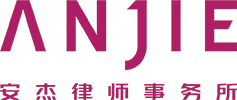On 8 December 2021, the Supreme People’s Procuratorate (SPP) issued the second batch of Enterprise Compliance Model Cases, consisting of six cases involving such crimes as collusion in bidding, passing off a registered trademark, and major liability in an accident. This article looks at the role of the third-party monitoring and assessment mechanism in enterprise compliance rectification in light of the model cases.
Q: What is the third-party monitoring and assessment mechanism for corporate compliance?

Partner
AnJie Law Firm
A: On 3 June 2021, the SPP, the Ministry of Justice, the Ministry of Finance and the State-owned Assets Supervision and Administration Commission of the State Council jointly issued the Guiding Opinions on Establishing a Third-Party Monitoring and Assessment Mechanism for Compliance by Implicated Enterprises (for Trial Implementation), specifying that, “the term ‘third-party monitoring and assessment mechanism for compliance by implicated enterprises’ means that when a procuratorate handles a case involving a criminal offence by an enterprise, if application conditions for the pilot project of enterprise compliance reform were satisfied, the case is handed over to a third-party monitoring and assessment organisation, elected and formed by the third-party monitoring and assessment mechanism management committee”, to investigate, assess, monitor and inspect compliance undertakings given by the implicated enterprise.
Q: What is the composition of a third-party monitoring and assessment organisation?
A: It usually comprises personnel from legal, business operations, government and other professional organisations. For example, in the case where company J was suspected of the crime of passing off a registered trademark, professional IP personnel from the market regulation authority and the science and technology authority were involved. In the company Y collusion in bidding case, professionals from the market regulation authority and the industry and commerce federation were involved. Where company Z was suspected of the crime of major liability for an accident, professionals from the emergency management authority, the market regulation authority and the industry and commerce federation were involved. Where company S was suspected of dissimulating or concealing the proceeds of a crime, professionals from the natural resources and planning authority, the market regulation authority, the tax bureau, the comprehensive administrative law enforcement authority, the industry and commerce federation, and National People’s Congress delegates and Chinese People’s Political Consultative Conference members were involved.
Q: Which implicated enterprises satisfy the conditions for applying compliance rectification?
A: Admitting guilt/accepting punishments, being willing to make corrections, and having good development prospects are the quintessential conditions for applying compliance rectification. Company J had paid compensation for losses and the enterprise had good development prospects. Company Y is currently in a stage of rapid development with contributions to society. Company Z pays taxes lawfully, has provided employment for more than 2,500 people and has the capacity to contribute to local economy. Company S’s products are widely used in aerospace, alternative energy, microchip and other sectors. The company is a former winner of the National Outstanding Private Technology Enterprise Innovation Award, employs more than 80 people and has an annual output value of more than RMB20 million (USD3.2 million).
Q: How does the third-party monitoring and assessment mechanism contribute to criminal proceedings?
A: Under article 14 of the above-mentioned opinions, “in the course of handling a case involving a crime by an enterprise, the People’s Procuratorate shall take the written compliance inspection report of the third-party organisation, the compliance plan for the implicated enterprise, regular written reports and other such compliance materials as important references for rendering in accordance with the law decisions to approve or not an arrest, to institute or not a legal action, on whether to modify enforcement measures, or making sentencing recommendations, procuratorial recommendations or rendering procuratorial opinions”.
In the model cases, the procuratorial authority issued recommendations to the public security authority for company S’s suspected crime of passing off a registered trademark based on the compliance assessment report issued by the third-party monitoring and assessment group, and the public security authority withdrew the case. For company Y’s suspected collusion in bidding, company Z’s suspected major liability for an accident, and company X’s suspected smuggling of common goods, the procuratorial authorities recommended against instituting legal action. For company S’s suspected dissimulation or concealment of proceeds of a crime, the procuratorial authority recommended leniency and a reduced or suspended sentence.
Q: How is an effective compliance plan formulated and implemented?
A: An effective compliance plan must be more than “compliance on paper” or “pro forma compliance”, and must dispel criminal risks. The intent of the SPP’s pilot system of not instituting legal actions for compliance issues is to encourage and spur enterprises to establish their own comprehensive compliance, from business ethics to administrative and criminal compliance, through core and ultimate criminal incentive measures.
(1) Tailored compliance plans targeting vulnerabilities particular to different enterprises. Company J formulated a progressive compliance plan, including establishing a compliance charter and compliance organisation system, formulating a dedicated compliance system, and enhancing corporate compliance awareness. Company Z improved its internal control systems through compliance reviews, assessment and monitoring, and risk warnings, giving rise to a “compliance template” for the work safety field.
(2) Establishing an independent internal compliance organisational structure and comprehensive implementation of safeguards. Company J created dedicated compliance positions, improved its organisational structure and regularly conducts inspections. Company Z established a compliance organisational structure led by its legal representative that covers all departments. Company X formulated dedicated budgets, established a compliance management committee at group level, with the compliance, internal control and audit departments forming three lines of defence in compliance risk management, and provides continuous human resource and financial assurance for corporate compliance development and maintenance.
(3) Enhancing the compliance awareness across the board and developing a compliance culture. Company J established system guidelines, strengthened process management, improved risk control mechanisms and completed a series of rectifications from establishing a compliance system to policy formulation and improving compliance procedures to cultural development. Company X established compliance system operational mechanisms for compliance risk identification, compliance training, compliance reporting and investigation, and compliance performance assessment.
In essence, compliance rectification is a form of co-operation that prevents and governs corporate criminal offences. After rectification, implicated enterprises can avoid litigation, have the case withdrawn or receive mitigated punishment, benefitting from not just a reduction or avoidance of criminal liabilities, but also improved management efficiency, which paves the way for creating greater value and sustainable development.
Huang Qian is a partner at AnJie Law Firm

19/F Tower D1, Liangmaqiao Diplomatic Office Building
19 Dongfang East Road
Chaoyang District
Beijing 100600, China
Tel: +86 10 8567 5988
Fax: +86 10 8567 5999
E-mail: huangqian@anjielaw.com





















